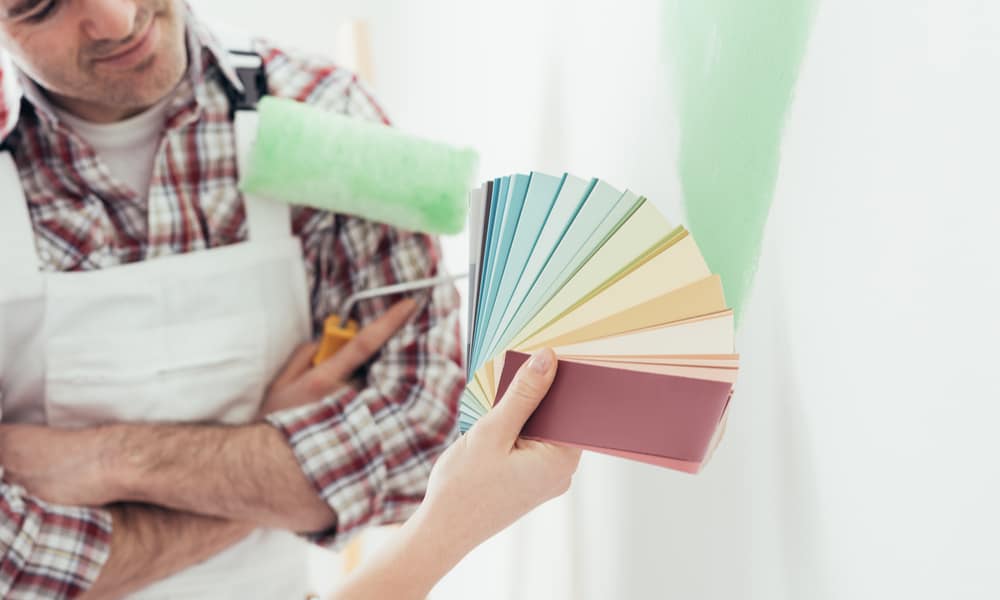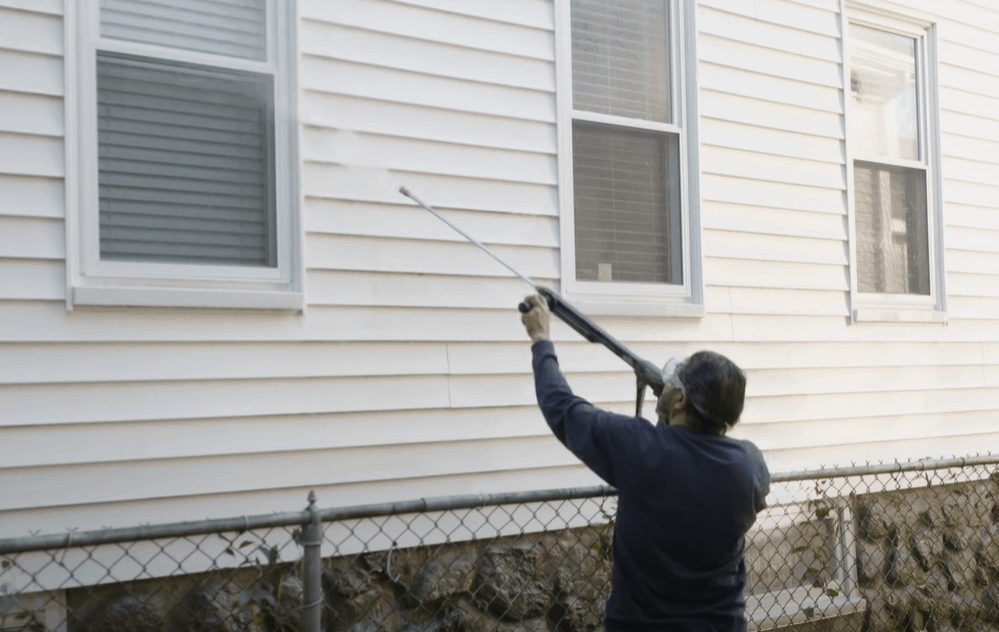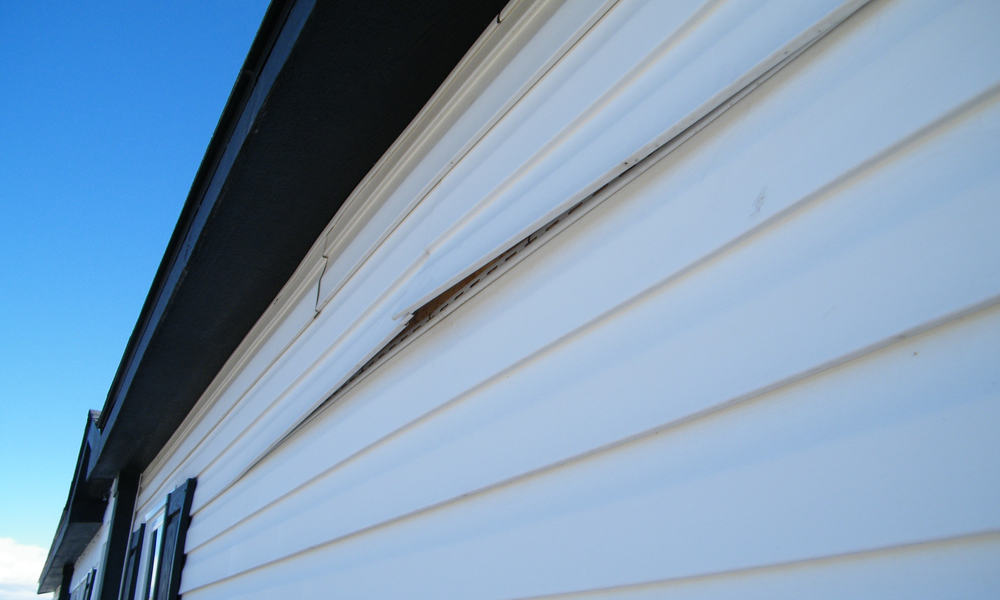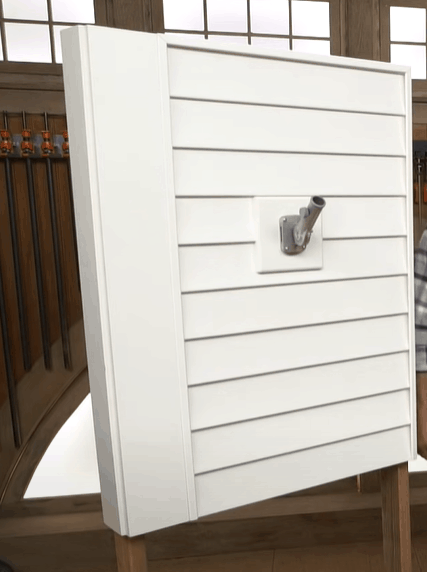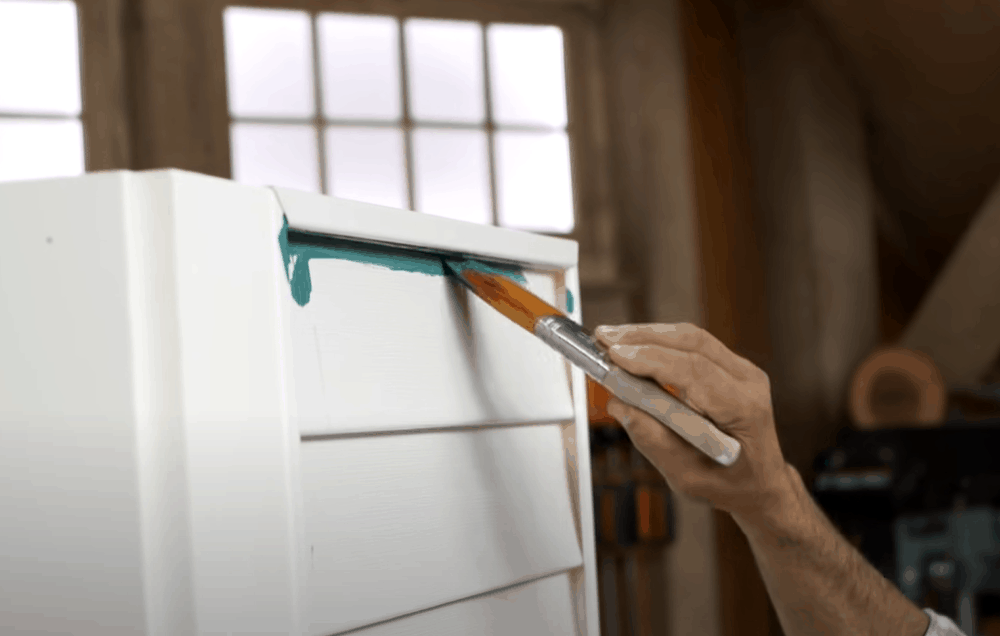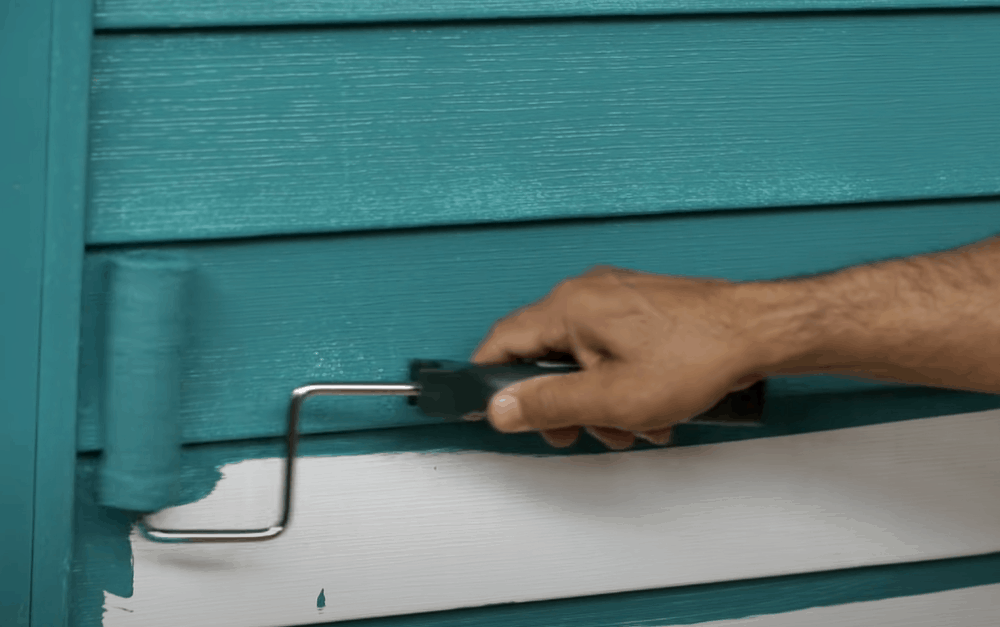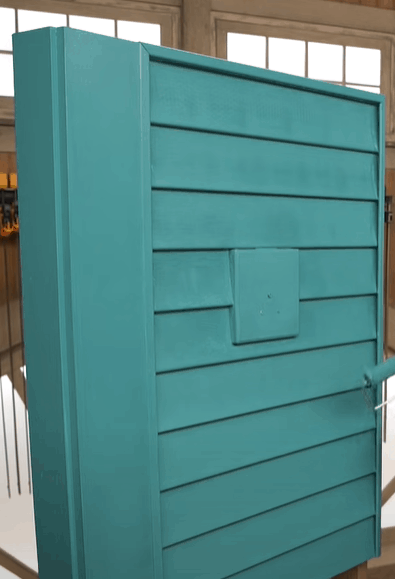Vinyl is considered a relatively low-maintenance siding material, particularly because it does not require painting. However, over time, the original color of the siding may fade due to constant exposure to the sun, leaving the exterior of your home looking dull and lifeless.
The good news? You can bring back your home’s glamor by applying a layer of paint to the vinyl siding. This post explains how to paint vinyl siding and is all you need to do the job right.
Table of Contents
Tools Needed to Paint Vinyl Siding
A typical vinyl siding painting task will require the following supplies:
- Vinyl paint: Choose a paint containing acrylic and urethane resins; such paints adhere better to services.
- Garden hose: A garden hose will be perfect for washing dirt down the vinyl. For best results, attach a spray nozzle.
- Soft brush/rag/sponge: Use any of these to scrub the siding. Don’t use anything rough or you will scratch the vinyl.
- A gallon of water: Use clean, cold water.
- Soap: This can be any mild laundry soap or dishwashing liquid. Avoid using harsh cleaners, as these can damage the vinyl.
- Painter’s tape/masking paper/plastic sheeting: Use any of these to cover areas you don’t want to paint.
- Primer: A primer will help cover the areas you repaired and any other blemishes on the siding.
- Paintbrush/paint sprayer: While a paintbrush will get the job done just fine, if you are painting an entire wall of siding, it would be best to use a sprayer, as it’s much faster. Plus some brushes may leave unsightly streaks on the panels.
7 Simple Steps to Paint Vinyl Siding
While painting vinyl siding is a fairly easy DIY project, to get the best outcome, it is a good idea to check the weather forecast first.
The ideal atmospheric conditions for painting your siding would be low relative humidity and mild temperatures. If the weather is too sunny, too hot, or too windy, the paint will not adhere properly to the surface and will soon start cracking.
If the weather is perfect for the job, follow these steps to paint your vinyl siding.
Step 1: Select the Right Paint
Just because the nearest paint in the isle says ‘good for vinyl siding’ on the can doesn’t mean it is actually good. If it doesn’t have acrylic and urethane as part of the ingredients, then it is probably not the best for the job.
Because vinyl siding expands and contracts with changes in temperature, you need a product that won’t break when the panels go through these changes. Acrylic and urethane can accommodate vinyl expansion and contraction and prevent the paint from cracking and peeling.
The paint should also be exactly the same shade as the current color. If you can’t find the exact shade, go for a lighter shade. Avoid using darker shades, as these will absorb and retain heat, causing the panel to warp or break prematurely.
Ask one of the paint experts at your local hardware or home improvement store to suggest proper paint for exterior use. There are plenty of paints designed specifically to be used outside and these would be your best bet if you are looking for something that lasts.
Step 2: Clean the Siding
If you don’t want to see ugly bumps after your paint job, then you need to start with a clean surface.
First, use the hose to rinse down the vinyl siding. Then, pour a gallon of water into a basin and add ½ cup of mild detergent. Now, dip a soft brush, cloth, or sponge into the solution and scrub the siding to get rid of dust, dirt, debris, grease, and ashiness.
Start from the bottom and work your way up the siding, rinsing each area right away after scrubbing. Make sure you are directing the water stream down; it will prevent it from entering behind the vinyl and causing mold. Allow the siding a few hours to completely dry before proceeding.
Step 3: Repair Any Damages
Before you apply any paint on your vinyl siding, you need to make sure the panels are in good condition. So, inspect them carefully to see if there are any holes, cracks, or scratches, and do the necessary repairs.
Damaged spots can serve as entry points for pests and moisture, causing problems like nesting and mold. Excess moisture can also cause wood rot, compromising the internal structure of your house.
Small holes and cracks can be fixed with caulk or by patching. For bigger damages, however, the panels may need to be replaced.
Step 4: Mask off Areas You Don’t Want to Paint
Using masking tape, painter’s tape, or paper sheeting, cover trim, doors, windows, hardware, and anything else you don’t want to get paint on. If something is better off removed, pull it out.
This could also be a good time to clear the work area; remove plant pots, patio furniture, and any other obstacles that may be preventing you from reaching all the parts of the siding that need painting.
Step 5: Apply a Layer of Primer (Optional)
If you repaired your vinyl siding earlier, you will need to apply a primer to hide the imperfections and create a smooth and uniform surface for the paint to adhere to.
You can use a paintbrush or paint sprayer to do your application. If you are using a sprayer, however, make sure to follow up with a brush to spread the primer evenly and get rid of heavy areas.
Allow the primer enough time to dry. Depending on the brand, this can take between one and four hours. Check the can to know how long you should wait.
Step 6: Apply the Paint
Apply a thin coat of paint to the cleaned or primed siding. Like priming, you can use a paintbrush or paint sprayer. Just make sure to smooth the coat up with a brush if you are using a sprayer.
It is also important that you don’t apply too much paint in one area, as this can keep the siding from drying quickly; distribute the paint evenly.
Once you are done with the first coat, let it dry as directed. Then, do a second coat and let it completely dry. In most cases, two layers of paint will be enough. But it is always important to inspect the siding after the second application to determine whether a third coat is necessary.
Step 7: Remove the Masking Material
If you are satisfied with your work, go ahead and clean up the site. Unmask anything you had covered earlier and put the flower pots and garden furniture back to their respective places.
Additional Tips for Painting Vinyl Siding
Check the Vinyl Warranty
Most vinyl siding manufacturers will not honor a warranty if the siding is painted even if the siding is brand new. Make sure to check what your warranty says about painting your siding before starting the project.
However, if the warranty is no longer valid or is already expired or you aren’t worried about voiding it, you may just go ahead and paint your vinyl siding.
Paint Your Siding Every Few Years
Because paint is not baked in like the original color of the siding, it will fade more quickly, thus you will need to repeat the application every few years.
Generally, after the first application, vinyl siding will require repainting every five years, or more frequently for people who live in hot climates.
In areas where temperatures rise exponentially during the day and dip at night, the frequent expanding and contracting of the vinyl will make the paint break and peel quickly, meaning a paint job will be needed more regularly.
Understand That Painting Will Not Fix Damages
While a good paint job may hide minor scratches and blemishes on your vinyl siding, large holes and cracks will not be possible to hide.
In such a case, a siding replacement project would be a more practical option, because even if you decide to paint the old siding, you will still need to repair the damages first, and that can actually take more time than putting up new siding.
Read Your Paint’s Application Instructions
Even if you have worked with exterior paints all your life, it is still important that you read the application instructions of the paint you are using on your vinyl siding to avoid mistakes.
Vital information like how long you should wait for the product to dry after application will clearly be laid out on the can.
The Takeaway
Painting is an effective way to bring old, dull vinyl siding back to life. Begin by picking the right paint and cleaning the panels thoroughly. You will also need to repair any holes and dents on the siding before doing your application.
For best results, make sure the paint is evenly distributed and the previous coat is completely dry before applying the next one. It is also important to choose a day that has good weather; otherwise, the paint will not stick properly to the surface.
